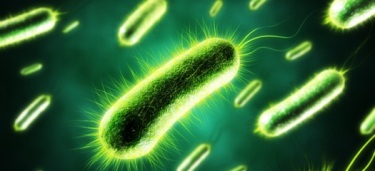A team of researchers from Harvard’s Wyss Institute and several other universities have discovered that by harnessing the tiny physical movements of a soil bacterium laid on some rubber, they can generate electricity.

A bit more specifically, the electrical generator the group created involves a small strip of latex rubber and a harmless soil bacterium called Bacillus sutilis, which has a pretty unique survival trick: when exposed to changes in humidity, that is, when the air dries up, these spores shrivel up, and when the air is moist, they plump up again.

This physical movement — shriveling down and plumping up — was harnessed by the researchers so as to make an actuator that could generate electricity.
The team's work was recently published in Nature Nanotechnology . The team details in the article how they slathered one side of a sheet of rubber with the bacterial spores. When the sheet dried, it curled up, and when they increased the humidity, it straightened out again. To capture the changes in humidity, and thus harness the energy, lead researcher Ozgur Sahin built out of Legos a humidity-driven generator , in which the bacteria-covered rubber acts as a cantilever that flips back and forth which, in turn, drives a rotating magnet to produce electricity.

The group believes that a scaled-up version of the device they created could use the natural evaporation of water to generate useable amounts of clean electricity. “Sunlight hits the ocean, heats it up, and energy has to leave the ocean through evaporation,” Sahin said. “If you think about all the ice on top of Mt. Everest — who took this huge amount of material up there? There's energy in evaporation, but it's so subtle we don't see it.”
A brief demonstration of the group’s experiment can be seen in the clip below:
During the experiment, Sahin noted that he was surprised by how well the spores in the bacterium reacted to changes in humidity. He specifically references an incident when he put a solution thick with spores on a tiny, flexible silicon plank, so as to measure the humidity-driven force in a customized atomic force microscope. Before he could put the plank in, he saw it curling and straightening with his naked eye — his inhaling and exhaling had changed the humidity subtly, and the spores were responding.
“I realized then that this was extremely powerful,” Sahin said.
In fact, the group found that just increasing the humidity from a dry, sunny day to a humid, misty one enabled the flexible, spore-coated plank to generate 1,000 times as much force as human muscle, and at least 10 times as much as other materials engineers currently use to build actuators.
Looking ahead, Sahin and his group hope to genetically engineer the spores to be stiffer and more elastic. The outlook in this regard looks promising: early experiments have already produced a mutant strain that can store twice as much energy as the normal strains the group was previously using.
Story via wyss.harvard.edu
Advertisement
Learn more about Electronic Products Magazine





